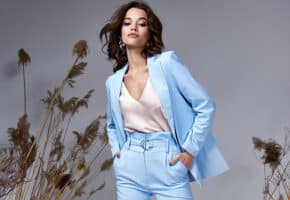A-Z Model Glossary – Phrases and Keywords
As with professionals in any industry, those that work with models use words and phrases that the average person will not have heard of. At the start of your career you won’t know what they all mean, so to help clear a few things up, we’ve made a glossary list that you can refer to whenever you find yourself a bit confused.

Advertising / Commercial Model: A model who works with brands and organisations to sell a product or service. They usually require acting skills alongside model features.
Agency: An organisation that represents models with the aim of finding them work. An agency has their own list of clients (fashion brands, product brands, photographers etc) who regularly need models; the agency’s job is to match the right model to the client’s brief.
Agent: A member of the agency that matches models to a client’s brief.
Androgynous: Characteristics of a male and a female. If you’re a guy you will have female characteristics (check out world-famous model Andrej Pejic) and if you’re a girl, you will have a tomboy look (Agyness Deyn).
Book: See ‘Portfolio’.
Booker: A member of the agency that finds work for models, especially at busy times of the year such as Fashion Week. Similar to an ‘Agent’.
Call back: The term used to describe a second casting/interview. If you are called back it’s usually because the client liked you and wants to find out more about your modelling potential, experience, look etc.
Casting: The model equivalent of an interview. Models are invited to a casting (there could be five, ten, even one hundred other models in attendance) to meet agents, photographers etc. A model’s aim is to impress the client in hope of being hired for work. A model can expect to attend thousands of castings throughout their career.
Client: A business, person, photographer (or anyone who requires a model).
Commission: A fee that an agency will take from a model’s pay cheque to cover the agency’s costs. A commission amount will be agreed with a model before they undertake any work.
EFolio: An online portfolio in the style of a website.
Fit Model: An in-house fashion model (or a model that’s used regularly) to wear clothes behind the scenes to ensure that they are fitted properly. Designers will often work on the clothes as the model wears them.
Fitting: An appointment that a model must attend to ensure that the clothes they are being employed to wear actually fit.
Freelance models: Models that represents themselves. They are not signed to an agency and therefore have to find work independently.
Headshot: A portrait style photograph of a model’s face. These are not fussy, just a simple snapshot of the model.
High-fashion model: A model that works with designer brands, who walks the runway and appears in luxury advertising campaigns, promotions and editorials.
House Model: A model that works for one brand, normally back stage. See ‘Fit Model’ too.
Mother Agency: If a model is represented by more than one agency, the ‘Mother Agency’ is considered the model’s main agency; the one that scouted the model and helped them start and develop their career.
Open casting call: A casting that does not have a specific time slot for each model. Open castings give the opportunity for a model to turn up at whatever time they like. This can be good because it means a model can organise their castings so that they can get to all of them, but it can be bad as queues are very likely.
Portfolio: A book of images that show a model’s career to date. There may be ten to twenty photos of the model that shows them in different locations, outfits and poses. Models are expected to take their portfolios to castings.
Real-Life Model: A model that represents the general public. There are no specific height or age requirements for real-life models but they do need to have a great personality and an ability to work to a brief.
Scout: A member of a model agency who has the job of finding (‘scouting’) potential models. Leomie Anderson and Kate Moss were both scouted.
Signed: If a model is ‘signed’ to an agency, they are ‘represented’ by an agency.
Statistics: A model’s height, weight, measurements, hair colour and age.
Z-Card: A model’s business card that contains their name, phone number, contact details, statistics and a small selection of images.


